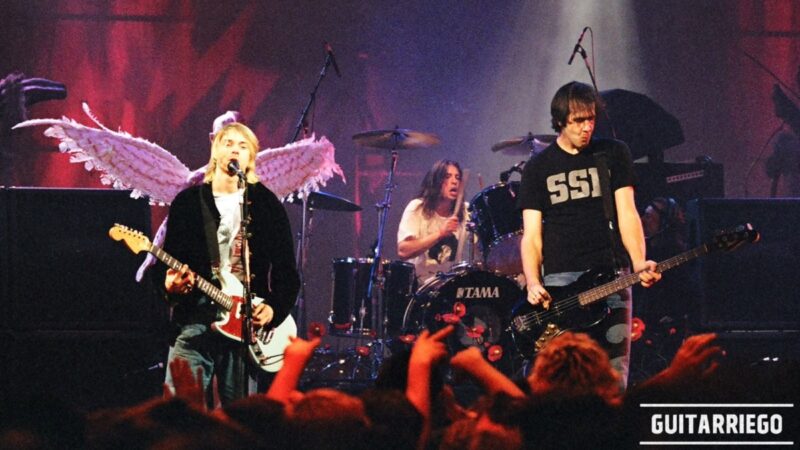Parts of the electric guitar and importance of each
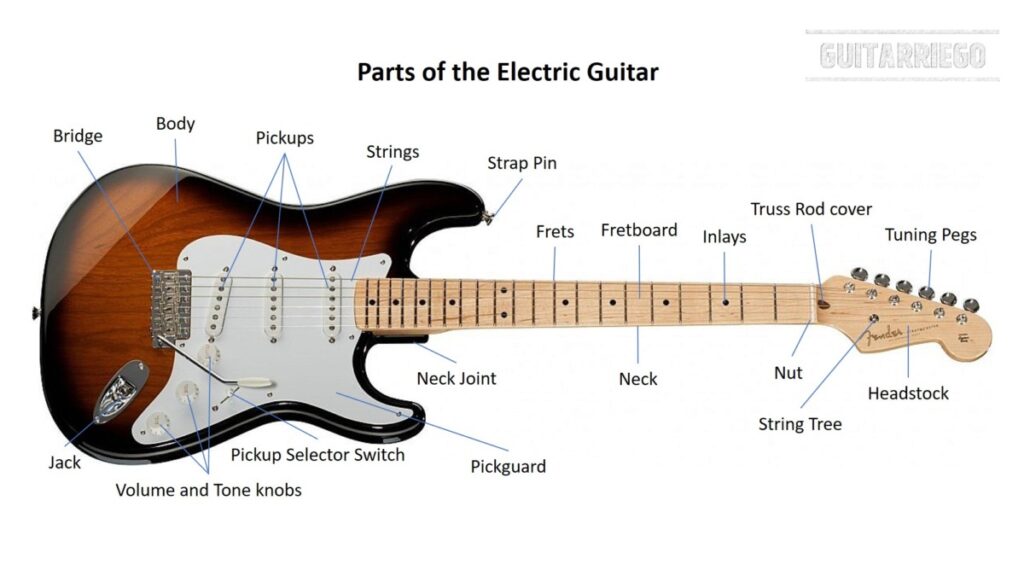
Parts of the electric guitar, characteristics, function, options and importance of each of them and their impact on the tone and how to improve it.
Importance of electric guitar parts
Understanding the importance of each of the parts of an electric guitar will allow you to find the tone you are looking for and also how to upgrade your electric guitar.
What are the parts of an electric guitar?
The parts of an electric guitar are:
- Guitar body
- Guitar neck
- Fretboard / fingerboard
- Truss rod
- Headstock of guitar
- Frets of guitar
- Bridge of guitar
- Tailpiece of guitar
- Tuning pegs / Tuners / Tuning machines of guitar
- Nut of guitar
- Tremolo or vibrato system of guitar
- Guitar pickups
- Potentiometers & Capacitors of guitar
- Guitar Pickup Selector Switch
- Guitar Pickguard
Classification of the parts, pieces and components of an electric guitar
Guitars are made up of several parts, pieces or components, which can be classified into:
- Guitar wood parts: These are all wooden components such as the body and neck of the guitar.
- Hardware of electric guitar: They are all the exchangeable metallic parts that are not part of the electronics.
- Guitar pickups
- Guitar electronics: Potentiometers, capacitors, cables, Jacks, pickup selector switch, etc.
- Other pieces: They are all those that do not make up any of the previous groups.
Guitar wood parts
Guitar body
Normally the body of the guitar is made of wood. Although there are also modern guitar models whose bodies are built from other materials such as carbon fiber or synthetic materials or even old instruments made of metal. Depending on the types of guitars, the body can be solid, semi-hollow with a solid center wood block, or -totally- hollow. The latter, together with the type of wood, is a great determinant of the weight of electric guitars.
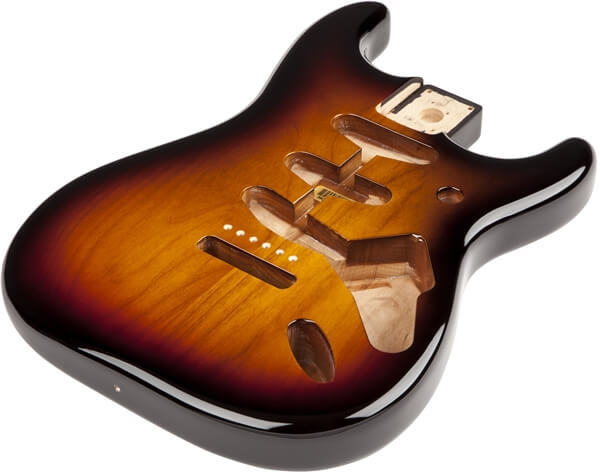
Guitar neck
The neck of the guitar is considered the most relevant and important part, both regarding the tone and audio of the instrument, as well as its comfort and playability. Guitar necks can be made from one or more pieces of wood. The most commonly used tonewoods are maple and mahogany. Guitar necks can be glued or bolted to the body, or continue the entire length of the guitar including the body, what is called neckthrough.
If you want to know more about tonewoods, you may be interested in our guide on substitute woods for mahogany in cheap Gibson Les Paul type guitars.

Fretboard or fingerboard
The guitar fretboard is where the strings are fingered. Normally the fretboard are made of wood. The most used tonewoods are rosewood, ebony, maple, pau ferro, and other hardwoods. Also, although it is not normal, the fretboards are made of synthetic materials such as the Richlite used by Gibson for the Les Paul Custom model.
The length of the scale -although it is actually the scale of the guitar- and its material largely define the attack and sustain of the guitar. The profile of the guitar’s fretboard also contributes to comfort. For rhythm guitarists, profiles with smaller radius -more rounded- are usually preferred. This is because the curvature adapts better to the shape of our hand, but they do not work as well for bending. For the latter, larger radius profiles -flatter fingerboards- work better for Lead guitarists, since they allow more extreme bendings.
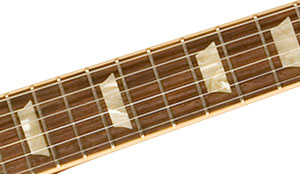
Headstock of the guitar
The headstock is the top of the guitar neck. This is where the tuning pegs are normally located. Along with the body of a guitar, these are the parts where you will find the greatest design and unique shapes.
We recommend that you visit our guide with the secrets to keep your guitar in tune.
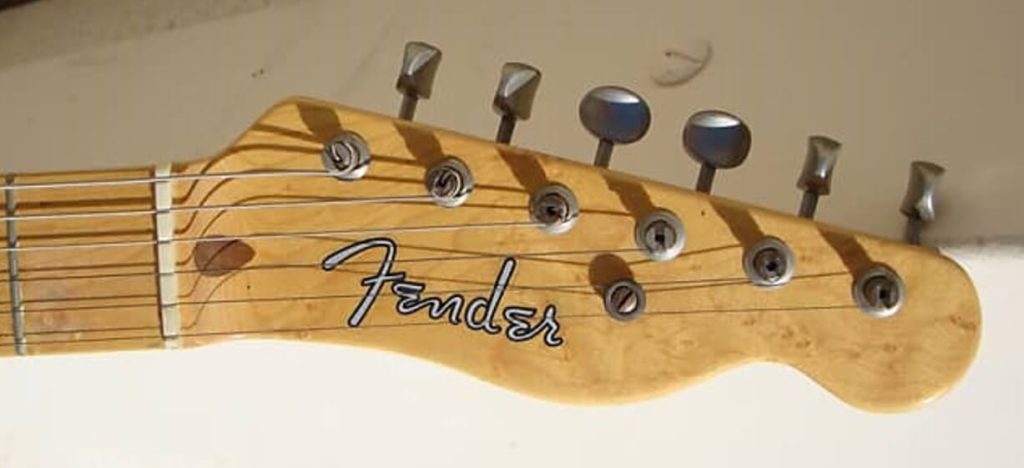
Hardware or guitar hardware
Bridge of the guitar
The bridge of the guitar is where the strings are held or rested at the end of the body. Bridges can be fixed or floating. Fixed bridges usually have more attack and better tuning. While floating bridges, such as the synchronized tremolo or the floyd rose, allow the use of vibratos and other techniques that give the musician more expressiveness, and make the strings feel softer to the touch. On the other hand, these guitar bridges have less attack and their tuning is more complex.
Saddles also have a great influence on tone, which is why we recommend this interesting guide on the differences between Stratocaster saddles: vintage and block.
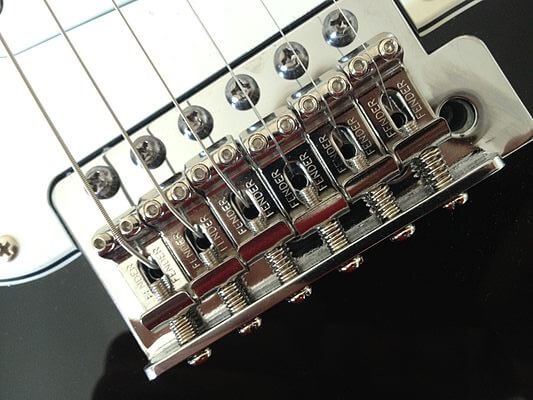
Guitar tailpiece
Some bridges only hold the strings, like the Tune-o-matic, and require yet another device to grip the strings. That additional object is the tailpiece.
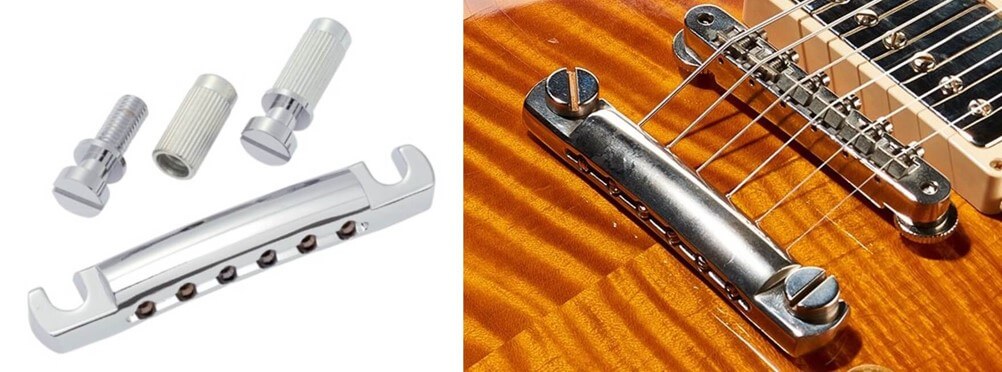
Guitar tuning pegs or tuners
The tuning pegs are the metallic devices located in the headstock of the guitar where the strings are wound. The tuners are located at the end opposite the bridge, their essential function is to regulate the tension of the strings and therefore their tuning.

Guitar tremolos and vibratos
Some guitars, instead of the tailpiece, have vibrato systems installed. The best known brand is Bigsby.
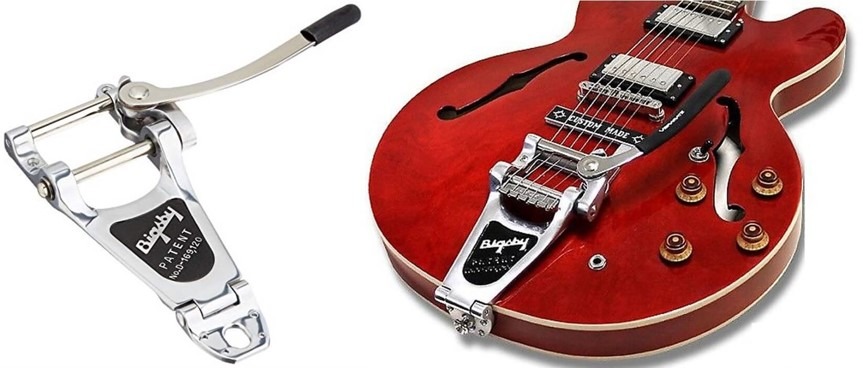
Electric Guitar Electronics
Guitar pickups
The pickups are a fundamental part of the guitar and are responsible for capturing the vibrations of the strings and transforming them into an electrical signal that generates the sound in the amplifier. They are made up of poles, magnets and copper wire wound around the poles and the magnet. The most used magnets are Alnico II, Alnico V and Ceramic. Alnico II tends to be smoother and with rounder audio, while alnico V tends to have a little more punch and punchier treble, finally, ceramic is the most aggressive magnet of all and is more used for heavier styles.
In addition, there are different types of guitar pickups: a) Singlecoil or Humbucker, while the singlecoil pickups are usually more dynamic and expressive, but noiser to play with overdrive or distortion. The Humbucker pickups are usually more compressed but cancel out the noise called “hum”, ideal for heavier styles that require drive.
You may be interested in this guide to Stratocaster guitar pickups.
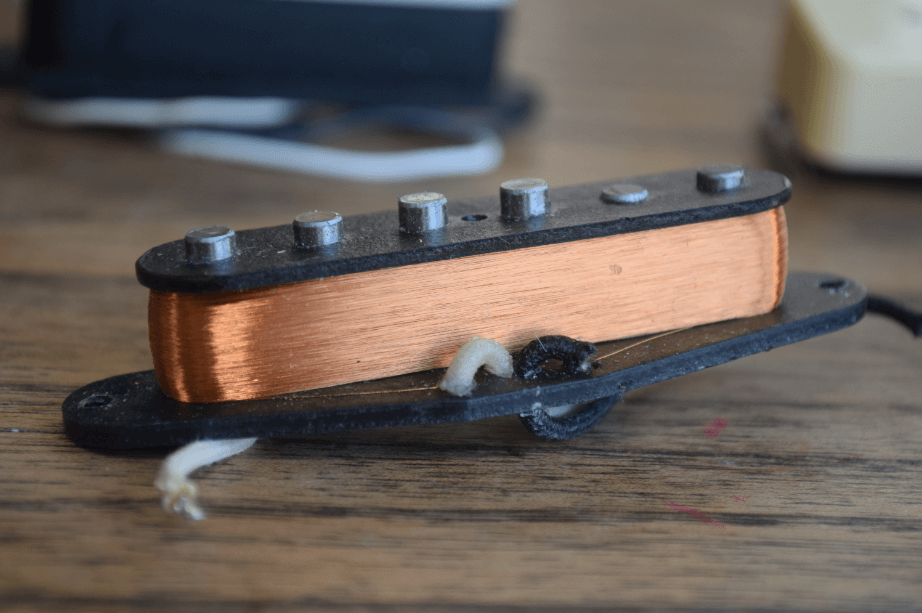
Guitar potentiometers and capacitors
These components are used to control and manage the audio of the signal picked up by the guitar pickups. The tone and volume potentiometers. You can use ones that filter more or less certain high frequencies.
Guitar pickup selector switch
The pickup selector switch allows us to select which pickup we want to activate or deactivate. They are not a key component of the guitar, but when they are not of quality, they tend to cause problems and noise and are one of the first parts that need to be changed.
Other guitar components
Guitar strings
Guitar strings are a fundamental part of the tone and comfort of your instruments. Strings can be of different gauge. The gauge is the thickness/diameter of a guitar string. The larger the gauge, the string is thicker. These strings have thicker sound, but lose some treble and definition. Also, you will feel the guitar harder and you will require more force to play. On the contrary, the smaller the gauge, the guitar will have a brighter, clearer and more defined sound. Also, you will feel the guitar softer and it will require you less force. Thus, it can also happen that you press the string with excess force and the note goes out of tune.
In addition, there are different types of strings: Flat wound, Half wound and Round wound strings. The most common are the Round wound, they last less and have more shine than the rest.
Truss Rod
The Truss rod is a metal bar -steel or another very resistant material- installed inside the neck of the guitar. Their function is to counteract the tension of the guitar strings and maintain and regulate the curvature of the neck. The Truss rod can be single action, that is, they can only be adjusted in one direction, which is against the force of the strings, or double action, which can be adjusted in both directions.

Nut of the guitar
The guitar nut is the part where the string rests at the zero fret. Normally, the nuts are made of bone or some synthetic material that imitates it or they can also be made of metal.
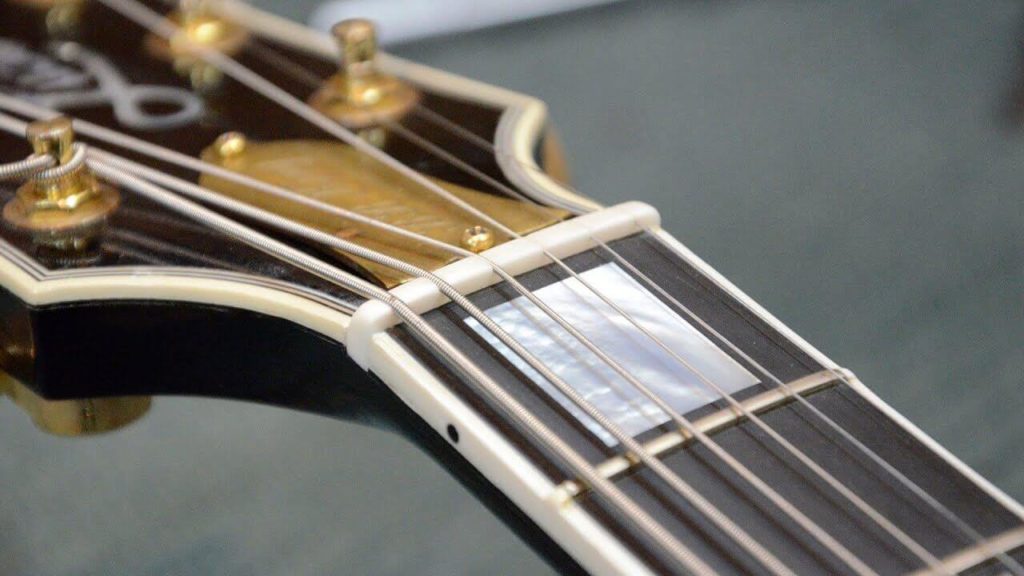
Guitar frets
Frets are the thin strips of metal embedded in the fretboard of the guitar neck. The height of the fret has a great influence on how you will feel the guitar and also its playability. There are different sizes, and their choice is to the taste of each guitarist. As a general rule, it can be said that very high and wide frets are preferred by Lead guitarists, since they facilitate bendings, hammer-on and pull-off. Wide and low frets, on the other hand, are usually comfortable to slide across the guitar’s fingerboard. Finally, the narrow and low frets are vintage type, from the time when the electric guitar played a mainly rhythmic role. Medium Jumbo frets have relatively intermediate sizes that make them ideal for versatile musicians who play both rhythm and lead guitars.
If you want to know more about this, we recommend our guide with everything about guitar fret wire.

Guitar pickguard
The pickguard is a plastic layer made to protect the guitar body in the area of strumming the guitar. The most common colors are white and variants of white, black, pearl or tortoise.

Additionally, you can name accessories that are not part of the guitar but are used for its execution, such as the picks, slides, capos, among others.
If you liked this note, you can share it on your favorite social network. You can also share opinions in the comments section below.
We recommend our guide with the best tricks to improve the tone of your guitar.


